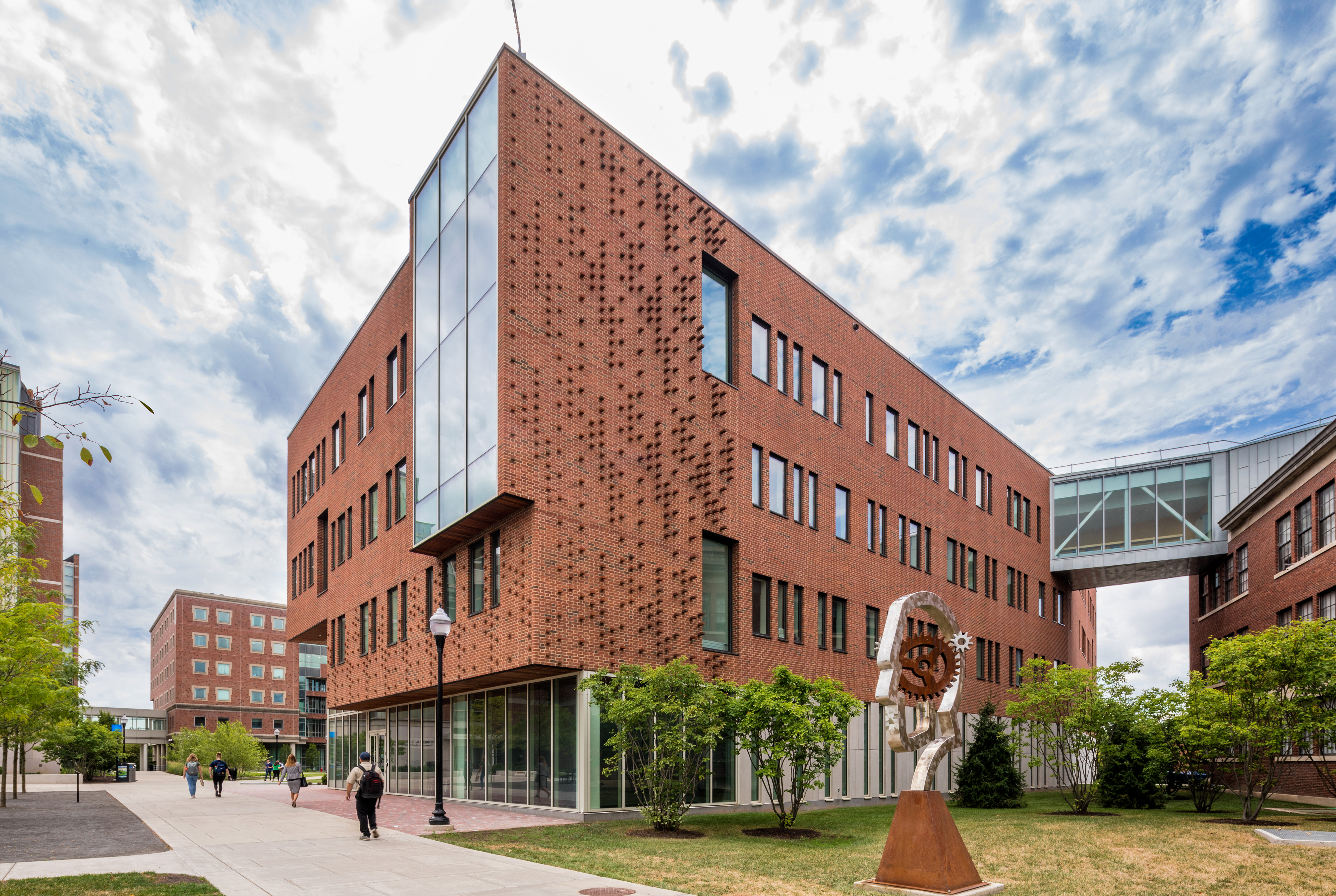Make A Difference
Get Involved in Research
At Rochester, we value interdisciplinary research. Whether you're collecting data in the field, analyzing speech in the lab, or building tools for under-documented languages, there's a place for your curiosity and contributions.
Our Areas of Research
Our department explores a wide range of linguistic subfields: from documenting endangered languages and studying how sounds are produced, to analyzing sentence structure and building computational models of meaning. These areas reflect our commitment to both theoretical depth and empirical research, spanning the intersections of language, cognition, society, and technology.
Computational and Experimental Semantics and Pragmatics
This interdisciplinary area combines formal linguistics, cognitive science, and computer science to investigate how meaning is structured, processed, and interpreted. Research in our department examines how conceptual categories are reflected in grammatical categories, and how this knowledge can be applied to building natural language understanding systems. Faculty develop precision instruments to measure the distributional and inferential properties of linguistic expressions, and design scalable systems that synthesize this data, yielding both scientific insights into the structure of meaning and practical tools for advancing language technologies.
Faculty members engaged in this area of linguistics are Scott Grimm, Aaron White, and Ash Asudeh.
Language Documentation and Description
Faculty and students in our department travel into the field to work with native speakers of endangered languages, many of which are spoken by a dwindling number of people whose cultural traditions have been disrupted or displaced. Back in Rochester, we transcribe and analyze the recordings to produce detailed linguistic descriptions and, in some cases, help create a written version of the language for the first time. The stakes are high: when a language disappears, so does the cultural knowledge, history, and worldview of the people who spoke it. Preserving linguistic diversity isn't just about saving individual languages; it’s essential to understanding the full range of human language and cognition.
Faculty members engaged in this area of linguistics are Nadine Grimm, Joyce McDonough, Maya Abtahian, Asia Pietraszko, C.M. Downey, Jeremy Coburn, and J.C. Wamsley.
Morphology
Morphology is the study of the structure and formation of words—and it plays a central role across the broader landscape of linguistic theory, intersecting with phonetics, phonology, syntax, and semantics. In our department, researchers explore a wide range of theoretical perspectives on what constitutes a word and how word forms are organized across languages. One approach treats morphemes as the foundational units of morphology, with words built up from smaller parts. Another approach focuses on fully inflected word forms and their relationships within paradigms, viewing morphology as an inferential system rather than one built from morphemes. These perspectives are explored through both formal analysis and computational modeling, particularly in the context of crosslinguistic variation and complex morphological systems. The department embraces this diversity of theoretical frameworks, using them to deepen our understanding of how words encode meaning and structure across the world’s languages.
Faculty members engaged in this area of linguistics are Joyce McDonough, Asia Pietraszko, Ash Asudeh, Mary Moroney, J.C. Wamsley, and C.M. Downey.
Phonetics and Phonology
Phonetics and phonology explore how speech is produced, perceived, and structured. Phonetics examines the physical and biological aspects of speech sounds, including how they're articulated and heard, while phonology analyzes how sounds are organized in linguistic systems and interact with meaning and grammar. In our department, research approaches speech as a purposeful and complex activity—the primary vehicle through which language is transmitted. Current projects include field phonetics and language documentation, the development of an interactive online speech atlas for Dene language communities, modeling vowel coding in the midbrain in collaboration with neuroscience and biomedical engineering, and cross-linguistic studies of tone and prosody. Past work has also included the use of ultrasound to study tongue movement during speech. This research bridges linguistic theory, experimental methods, and speech technology to deepen our understanding of human communication.
Faculty members engaged in this area of linguistics are Joyce McDonough and Jeremy Coburn.
Semantics and Pragmatics
Semantics is the study of meaning in language, how the meanings of words and phrases combine based on their parts and syntactic arrangement. It connects closely with both lexical semantics (the study of word meanings) and the syntax-semantics interface (how sentence structure influences meaning). Pragmatics, by contrast, focuses on how language is used in context, how speakers convey and interpret intended meaning beyond the literal words. This includes the role of inference, shared knowledge, and conversational expectations. For instance, a question like “Can you pass me that bowl?” is typically understood as a request rather than a literal inquiry about ability, unless the context shifts, such as in a physiotherapy session. Together, semantics and pragmatics shed light on how language users construct, interpret, and negotiate meaning in everyday interaction.
Faculty members engaged in this area of linguistics are Scott Grimm, Aaron White, Ash Asudeh, Mary Moroney, and J.C. Wamsley.
Syntax
Syntax is the study of the structure of sentences, how words combine into phrases and phrases into larger expressions that convey meaning. It explores the system that connects linguistic form (such as sounds or signs) with meaning, revealing properties of a uniquely human cognitive capacity. Research in our department approaches syntax from multiple theoretical perspectives, including derivational and constraint-based frameworks. Faculty and students investigate crosslinguistic patterns through fieldwork and typological comparison, as well as syntactic phenomena at the interface with semantics and morphology. Topics of study include anaphora, control and raising, perception verbs, and the structure of complex predicates, with a focus on languages from both Indo-European and non-Indo-European families. Syntax research here reflects a broader goal: to uncover the universal principles and language-specific rules that shape how humans build and understand sentences.
Faculty members engaged in this area of linguistics are Jeff Runner, Asia Pietrazko, Ash Asudeh, and Mary Moroney.
Typology, Historical Linguistics, and Sociolinguistics
This broad area of research explores how languages vary across cultures and time, and how language reflects and shapes social identity. Typology compares the structural features of diverse languages to uncover universal patterns and unique linguistic systems. Historical linguistics examines how languages change over time, while sociolinguistics investigates how language is used within communities, how it signals social, cultural, or regional identity, and how it evolves through contact, migration, and shifting power dynamics. Researchers in our department focus especially on language variation and change in endangered language communities, including processes of language shift and loss. Projects such as the Rochester Accent Project study local dialects to understand how language reflects the life, history, and identity of a region, while also documenting the ongoing effects of social change on language use.
Faculty members engaged in this area of linguistics are Maya Abtahian, Jeremy Coburn, and J.C. Wamsley.
The Importance of Linguistic Research
Most languages are spoken by few—and many are vanishing. Our research at Rochester helps document, understand, and protect the world's language diversity.
7,000+Linguistic Diversity
There's an estimated 7,000+ languages spoken around the world.
97%Minority of Speakers
97% of the world's languages are spoken by only 3% of the world's population.
50-90%Projected Loss
50-90% of the world's languages will have disappeared by the end of the century.
Student Voices
Our students tackle real-world linguistic challenges that ignite their curiosity and give them invaluable skills.
During my time at UR, I spent two years in Dr. Pietraszko’s field syntax lab, where I built a strong foundation in syntactic theory and research methods that directly supported my senior thesis. One of the most impactful experiences I had was traveling to Durban, South Africa, an unbelievable opportunity that deepened my research skills, allowed me to see a new corner of the world, and left me with unforgettable memories.

Center for Language Sciences
The Center for Language Sciences (CLS) is an organization at the University of Rochester that brings together faculty, postdocs, and graduate students who conduct research on any aspect of human language as a vehicle for active interdisciplinary work.
CLS fosters research and activities that reach across a very broad group of disciplines covering a wide research focus and range of interests. It's a continually evolving organization with a history of serving as a platform for training students and postdocs in interdisciplinary research and enhancing collaborations among members.
Read MoreContact Us
Get in Touch
For more information about the Department of Linguistics, our programs, our research, or our courses, send us an email.

